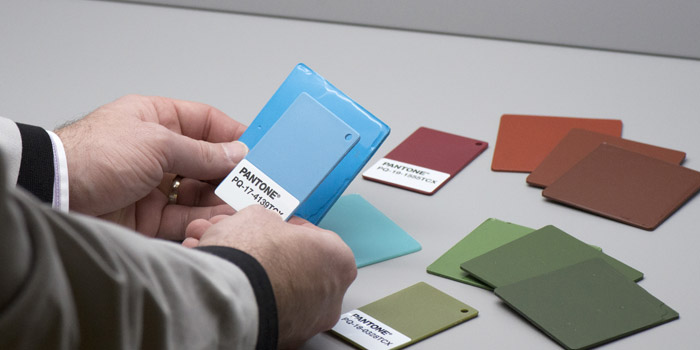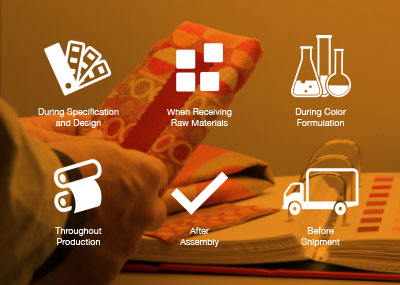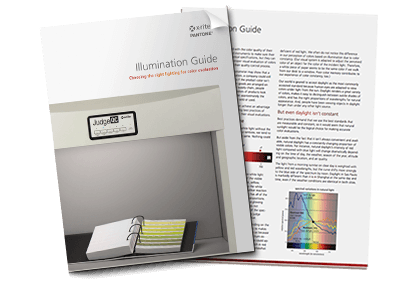Light Booths
Color looks different when lighting changes, which is why controlled lighting is essential for color evaluation. By implementing proper illumination and best practices for visual evaluation, you can reduce waste, rejects and rework and achieve an advantage over competitors.
Based on Macbeth technology, X-Rite offers industry-leading light booth solutions to replicate almost any lighting environment and fit the needs of most print and industrial applications. Browse our offerings below, or get in touch for personalized assistance.

Judge LED Light Booth
For LED Color Evaluation
Judge LED Light Booth is an eco-friendly, LED color evaluation tool that offers instant warm-up and consistent lighting to ensure accurate evaluations across the supply chain.
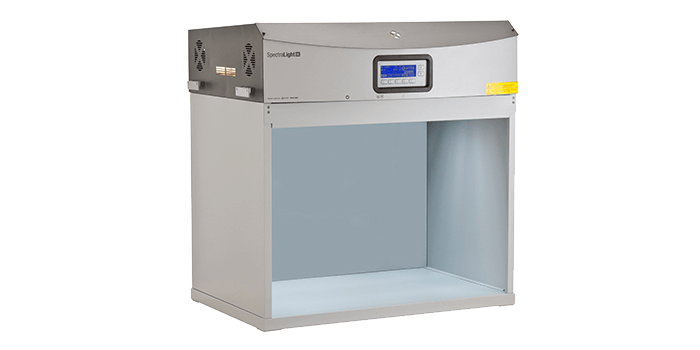
SpectraLight QC
For the Most Critical Visual Assessment
With 7 light sources including dimmable filtered-tungsten halogen daylight (class A) and optional LED, this top-of-the line lightbooth provides the most accurate daylight simulation available for optimum visual assessment.
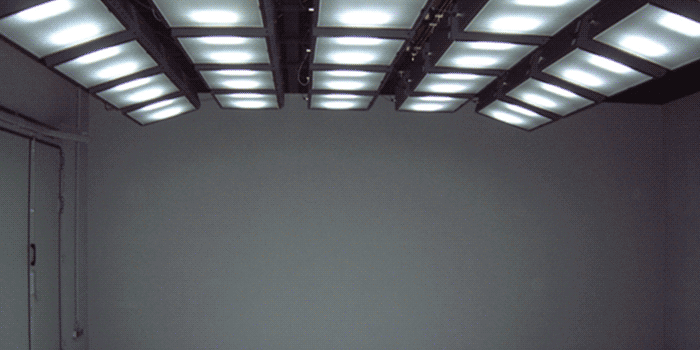
Harmony Room
For Customized Viewing Conditions
Harmony Rooms are customized fit-and-finish rooms equipped with SpectraLight QC luminaries to visually evaluate large parts, assembled products, or multiple items side by side.
Why Do I Need a Lightbooth?
X-Rite light booths enable critical color choices and reliable color assessment to avoid unnecessary revisions. Using a light booth to visually evaluate items and parts – next to each other and under different light sources – can help identify product defects, color inconsistencies, metameric effects (an optical phenomenon in which a pair of samples appears to match under one light source but not under another) and the impact of optical brightener agents (OBAs).
X-Rite light booths can replicate many lighting environments, including daylight (D50, D65) incandescent tungsten, warm-white fluorescent, and LED bulbs to verify products will look right in retail stores and after they arrive in the consumer’s yard, home, or office. They can help you adhere to visual assessment requirements in accordance with major international standards, including ASTM, DIN, ANSI, BSI, TAPPI, and ISO.
Which Light Booth is Best for Color Evaluation?
Premium Light Booth
SpectraLight QC offers seven light sources, including the best quality daylight available. It includes filtered tungsten halogen (D50 or D65), Cool White Fluorescent, Incandescent “A” & 2300K/Horizon, UVA, two more fluorescent types (choice of U30, U35, TL83, and TL84), and 2 LED light sources (choice of either LED 3500K, LED 4000K or LED 5000K). This premium booth also offers instant power-up and an indicator light to ensure operators of optimum stability.
Eco-Friendly Light Booth for Efficient and Consistent Visual Color Evaluation
The Judge LED light booth, designed with environmental considerations in mind, provides seven light sources for accurate color assessment. Customers can choose from a wide range of industry-standard illuminants, including LED D50, D65, LED-B2 3000K, LED 3500K, LED-B3 4000K, UV, A, CWF LED, TL84 LED, U30 LED, and U35 LED, allowing for precise customization to meet specific requirements.
Visual Assessment Tools
Another important consideration for visual evaluation is evaluator acuity. The Farnsworth Munsell 100 Hue Test is an easy-to-administer test and a highly effective method for evaluating an individual's ability to discern color.
Learn More about Light Booths and Visual Evaluation
To learn more, get in touch to speak with a Lighting Expert about your visual evaluation needs or browse these valuable resources:
Lighting plays a huge role in how we perceive color. These resources can help you get started with a light booth and implement visual evaluation best practices.
This whitepaper explains why standardized lighting is important for visual color evaluation, the primary sources used in a light booth, and how to set up a successful program.
By implementing proper illumination and procedures for visual evaluation according to best practices, companies can achieve an advantage over competitors, while also reducing waste, rejects and rework.

